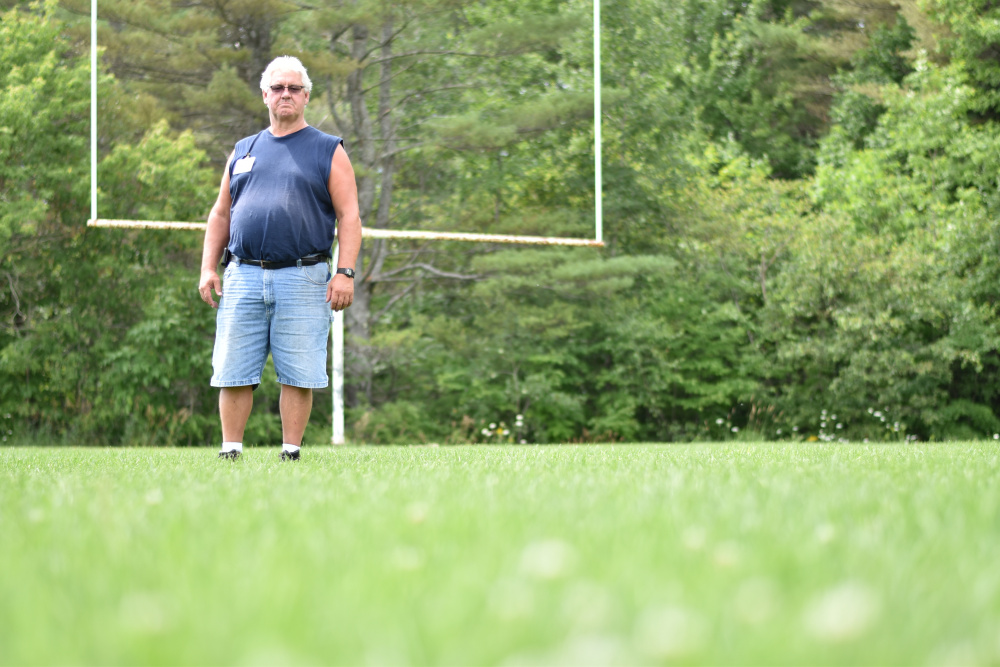Turfgrass can be tricky business for school districts.
State law says agencies should try to find ways to reduce pesticide use and find other means of pest management.
“With any chemical, there’s always a potential for exposure,” said Kathy Murray, coordinator of a state pest management program that provides schools with education and tools for better pest management practices.
But if turf isn’t kept up and a field gets bare spots, student athletes can be more susceptible to falling or getting an injury on those rough patches.
The answer might be overseeding, in which additional grass seed and fertilizer is spread over fields and naturally ground into the soil by athletes. That’s according to a U.S. Department of Agriculture-funded research project led by Jenny Kao-Kniffen at Cornell University, where she is an assistant professor of horticulture. “So far the statistics show we have a very strong overall effect on … controlling the weed population,” she said.
Now a handful of central Maine schools are involved in studying that method.
Murray collaborated with Kao-Kniffen to get Maine schools involved in the study, which used 51 athletic fields across Maine, New York and Connecticut. Eleven of those fields were in six school districts in Maine, including the fields in Oakland-based Regional School Unit 18 and in Winslow, plus Cony High School in Augusta, Gardiner Area High School, Oak Hill in Wales and Hall-Dale in Farmingdale. The study is due to be completed in August 2017.
Jeff Sheive, the facilities director at RSU 18, said the district has been looking for ways to avoid using pesticides. More than 10 years ago, he used granule pesticides to control weeds on the fields, closing them to students and staff; but the district no longer does that.
“We try to look out for the little students,” Sheive said, “and the older students, and how to protect them.”
After trying out the overseeding strategy for the study, Sheive said he could see the difference in the grass. There are fewer weeds and bare spots, and the grass is nicer, he said. “When you have good grass, you don’t have the bad pests,” he said.
Japanese beetles, for example, have been a problem, and they like “bad” grass such as crabgrass, he said.
The strategy is supposed to stop weeds and pests from sprouting on the turf to begin with, Murray said. The state program “focuses on preventing pest problems in the first place,” she said.
When representatives from Cornell University did a test with a reverse leaf blower on the school district’s turf, they found that there were good bugs in the grass that had been overseeded.
Overseeding has the potential to save the district money, too, Sheive said. Before, he was using slit-seeding, which requires a machine to cut a furrow in the soil and cost around $15,000 every summer in the past. With overseeding, he simply has to spread the seeds over the fields and let the student athletes squash them into the ground with their cleats.
Sheives said costs probably could be cut by up to two-thirds, as the district usually has to contract out some labor for the slit-seeding, and wouldn’t have to do so for overseeding.
The Department of Agriculture, Conservation and Forestry received $20,000 from the USDA grant to conduct soil and turf quality assessments on the schools’ fields, according to John Bott, the department’s communications director. The seed, fertilizer and spreaders were donated to the schools by Scotts, a national lawn care company.
On July 26, the DACF held a turfgrass workshop at Messalonskee Middle School showcasing the technique of overseeding. Nearly 100 people from Maine schools, landscaping companies, municipal park departments and universities attended the event.
Madeline St. Amour — 861-9239
mstamour@centralmaine.com
Twitter: @madelinestamour
Send questions/comments to the editors.




Success. Please wait for the page to reload. If the page does not reload within 5 seconds, please refresh the page.
Enter your email and password to access comments.
Hi, to comment on stories you must . This profile is in addition to your subscription and website login.
Already have a commenting profile? .
Invalid username/password.
Please check your email to confirm and complete your registration.
Only subscribers are eligible to post comments. Please subscribe or login first for digital access. Here’s why.
Use the form below to reset your password. When you've submitted your account email, we will send an email with a reset code.